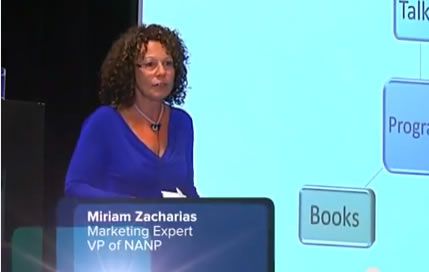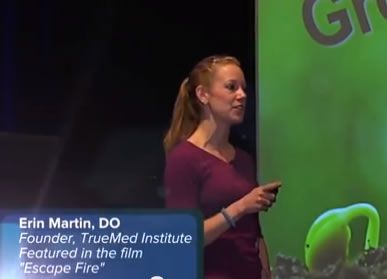LONG BEACH, CA — A wealth of new practice models are erupting in the field of integrative medicine, as more physicians and other practitioners seek ways of practicing that are more holistic and embracing of all aspects of their patients’ lives.
Conventional insurance-based medicine is far from dead, but the reality is that many practitioners are pulling back from the managed care paradigm and cutting their patient loads in the interest of having more time, attention, and energy available for the patients they do serve.
We hear a variety of terms these days: Personalized Lifestyle Medicine, Concierge, Consultation-Based Health Practice, Direct-Pay, and many more.
These approaches are distinct in some respects, but beneath the surface differences, they all share common characteristics: they enable doctors and patients to free themselves from a stifling “health care” system that doesn’t seem to really care about health.
These are exciting trends. Already, there are more options available in more places in the US than ever before. Oprah and Dr. Oz, those all-important medical advisors, have been invited into almost every home in the US, and they frequently mention modalities that fall outside the constraints of conventional, drug-based healthcare.
This means that across the nation, more people than ever have heard about holistic alternatives, and are looking for practitioners who provide them.
At Holistic Primary Care’s 2013 Heal Thy Practice conference, a distinguished faculty of leaders in the field of holistic and functional medicine explored the realities and nuances of these new care models.
Two common themes emerged: success in a direct-pay holistic practice depends on cultivating a new sense of client service; and it demands that practitioners become skilled at educating patients, and at communicating values.
From Servitude to Service
A clinician in a practice that does not process insurance, is not part of a network, and requires the patient to pay for services rendered, has entered the “service” business and must compete as such.
This is vastly different from the insurance model in which health plans dictate what physicians a patient can see. Patients who depend on insurance typically choose from a list of in-network doctors based on practice size and convenience of location.
They feel they have little choice, and tend to be relatively tolerant of less-than-hospitable service. They may not like the long waits, the brusque visits, the sense that they’re being “managed” rather than cared for. But they don’t feel like they have options.
Once a physician has the patient’s enormous medical record in a bursting file folder, and the staff makes it seem unwise to transfer records to another practice, patients usually just put up and shut up. If they’re told their insurance won’t cover a workup with a new physician because they’ve already received their promised yearly exam, most will simply resign themselves to their current practitioner, even if they have to wait for hours, call back repeatedly for test results, and twist their schedules to get appointments.
In other words, many patients have accepted mediocre service simply for the sake of consistency, convenience, and because insurance will cover it.
All this changes radically in the realm of direct-pay or concierge practice.
As soon as a patient hands over money directly from her own pocket, the expectations change. The mentality within the practice needs to shift from, “How do I deal with this problem as quickly as possible because I have a waiting room full of people” to “How can I best serve this individual’s needs and help him or her move toward greater health?”
The Power of Your Presence
This mindset shift is significant, but it need not be burdensome. In fact, it can bring great joy and purpose back into practice, said Michael Gaeta, LAc, at the Heal Thy Practice 2013 conference.

Michael Gaeta, LAc speaking at Heal Thy Practice 2013
“The stats indicate that the practitioners who get sued the least … has nothing to do with years of experience, head of this, chair of that, number of procedures performed. The thing that mattered the most was rapport with patients,” he said.
Never underestimate the healing power of your personal presence and your attention. Dr. Gaeta quoted Lonny Jarrett’s book, Nourishing Destiny, which says that, “The patient’s transformation is initiated by the very presence of the practitioner.”
Dr. Gaeta stressed, “We must be the change we wish to see in our patients.” What his perspective confirms is that especially in a private pay model, the kind of person the practitioner is, what he or she represents, and the maintenance of the integrity of the personal connection through the establishment of trust and demonstration of efficacy are crucial to success of the practice.
Selling Your “Light”

Miriam Zacharias, at Heal Thy Practice 2013
Though it may sound intimidating or conjure up notions of “used car salesman,” the essence of marketing comes down to identifying and clarifying your core values—the key features that make you and your practice distinct–and then finding ways to communicate those values clearly and simply.
Whether we realize it or not, most of us have engaged in “sales” all our lives to get what we want: attention from parents, a sweet treat, a baseball card trade, a date with our heart’s desire, a job, a spouse or mate, to win a debate or argument. Think about the process of getting into med school: you could think of that as your first major marketing effort. If you’re reading this, odds are that you succeeded!
That said, there is an art to sales and marketing, and physicians in private pay will be more likely to succeed if they develop sales as a skill set. The first step is to engage staff & cultivate their enthusiasm for holistic modalities and for the new practice model. A well-educated, vibrant and friendly staff is one of your best possible modes of marketing.
To say that a physician is only as good as his or her staff is almost an understatement in the direct-pay context. The people who handle your scheduling, receive and return calls, draw blood and process labs, render results, or any other auxiliary services need to perform these roles not just competently, but with an attitude and energy that’s aligned with the goal of creating a truly healing space.
Patients typically spend as much time with staff members as they do with their doctors: all these encounters matter. Private-pay patients will quickly take their money elsewhere if they have unhappy run-ins with staff.
Who are the patients that will pay extra for testing, therapies, and dietary supplements? The ones willing and able to come back on a regular basis for monitoring, follow-up visits, and supplement purchases? Finding and attracting these patients takes a combination of wit, charm, caring and competence.
Once you find them, you need to “sell” your specific treatment modalities and expertise. Ultimately, though, what you’re really selling is your “light,” which is a summation of your enthusiasm, your commitment to helping people heal, and your ability to guide people to better health outcomes.
Juggling Gracefully
Direct-pay and concierge models definitely eliminate many of the hassles and burdens of insurance-based care. But that doesn’t mean building a direct-pay practice is easy.
Ms. Zacharias, who has been a featured speaker at Heal Thy Practice for the last few years, says that physicians in these practices must learn to gracefully juggle the diverse roles of practitioner, CEO and marketing director. All of those functions, and all the myriad details of running the practice need to be directed toward the objective of helping people heal and providing the highest quality service.
Managing all these aspects of a practice may seem mind-boggling; few health professionals have formal training or experience with personnel management, marketing, or organizational psychology. But you don’t have to go it alone.

Erin Martin, DO, speaking at Heal Thy Practice 2013
It is always possible—and sometimes necessary–to outsource tasks and roles for which you as a practitioner do not feel competent. Your practice can become a lively place where other people are given encouragement to do their best work, and be in their passion, in the course of assisting you, as the physician. Be a doctor, if that is what you are good at, and let someone else do the rest, said Dr. Martin, who was featured in the award-winning documentary film, Escape Fire: The Fight to Rescue American Healthcare.
Assembling a team becomes crucial for success in a private pay practice. In the book Good to Great, the author Jim Collins emphasizes the importance of the commitment to having the right people in the right places in the business, using a metaphor of having “the right people on the bus, and in the right seats”. The people in the seats must want to travel in the direction the bus is going.
Of course, it all begins with knowing in which direction you want to drive the bus. Throughout the Heal Thy Practice conference, presenters emphasized that the more clear you are—about how you really want to practice and what you really love to do—the more able you’ll be to make the steps toward getting there.
Video and audio recordings of the 2013 Heal the Practice Conference are available on www.HolisticEducationExchange.net
END








